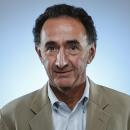Figuring out how to avoid another Reno air crash
- Share via
Ambulances were parked on the tarmac, ready for an accident. Inspectors from the Federal Aviation Administration were milling around Reno-Stead Airport, looking for safety risks.
The potential for trouble was so high that the National Transportation Safety Board sent investigators to the National Air Racing Championships just in case something went wrong.
All the attention was focused on the possibility that a pilot could die, the kind of grim outcome that had occurred 19 times in the past. But nobody expected the scale of disaster that unfolded Sept. 16, when a World War II-era P-51 Mustang plunged into spectators and killed 11 people.
For more than 60 years, the FAA has carefully managed air shows and races to keep onlookers at a safe distance. But now it has to figure out how to avoid a repeat of the incident, aviation experts say.
“It comes down to this: How much risk is the federal government willing to take?” said Michael Barr, an accident investigation expert at USC and former combat pilot. “Saying nobody has been killed before doesn’t wash.”
The FAA’s task could put a damper on a highly popular event that attracts jet fighter jocks, astronauts and aviation legends, who test their skills and physical endurance above the desert.
“It is a tragedy and I am very sorry a lot of people got injured or killed,” said Curtis L. Brown Jr., a former military test pilot, space shuttle commander, airline pilot and regular gold medal winner at Reno. “The only thing I can tell you from my heart is that I hope the air races continue.”
The precise causes of the accident remain under investigation, but an important factor appeared to be a small piece of aluminum called a trim tab that tore off the P-51.
The P-51 Mustang flown by Jimmy Leeward, a Florida real estate developer, was built in Inglewood in the mid-1940s. Like other planes in the competition, it had undergone significant modifications, including having several feet of its wingspan removed and its engine altered to make it faster.
There is a broad consensus that Leeward, 74, got into trouble when he encountered turbulence in the wake of other aircraft. But experts vary in how they analyze the rest of the disaster, in which Leeward’s plane climbed for a few seconds and then rolled with its nose down in a sharp dive.
Photographs and video images show that the trim tab tore off the elevator, the movable surface that controls an aircraft’s upward and downward pitch.
P-51s have lost trim tabs before at Reno. In 1998, the trim tab broke off a Mustang named Voodoo Chile, which pitched it upward and caused pilot Bob “Hurricane” Hannah to black out. He regained consciousness at 9,000 feet and landed safely.
Robert Hoover, a World War II combat veteran who helped start the Reno air races, said he experienced a trim tab failure when his P-51 was the pace plane a couple of decades ago. It was only because he recognized an unusual sound that he was able to avoid a disaster.
“If I hadn’t acted quickly, I would have wiped out eight other planes,” Hoover recalled.
Robert “Hoot” Gibson, a former military pilot who flew the space shuttle five times and later was a jetliner captain, had raced in a prior heat the day of this month’s accident and said he believed turbulence could have torn off the tab.
“I saw Jimmy hit turbulence and then everything went bad,” Gibson said. “I don’t think it is anything that Jimmy did. The shaking and the buffeting maybe caused the trim tab failure.”
Calvin Shoemaker, a 1950s-era Douglas Aircraft test pilot, said the loss of the trim tab would have caused tremendous forces on the control stick that Leeward could not overcome. Shoemaker doubts that the pitch up was severe enough or long-lasting enough to induce a complete blackout from gravitational forces, called Gs.
“The plane was flying itself,” Shoemaker said.
Matt Jackson, a pilot and vice president of the Reno Air Racing Assn.’s unlimited division, however, believes that the trim tab failed after the plane went out of control.
Jackson, who monitored the race in his role with the association, said a video of the final seconds of the flight shows that Leeward entered the final turn and the plane wobbled violently as it encountered the turbulence. Then Leeward pulled it up too sharply — “over-responded” — as he tried to regain control. The resulting G forces caused him to black out and the “gust loads” on the plane sheared off the trim tab, Jackson said.
“It was a turbulence-related loss of control,” said Jackson, who was scheduled to be interviewed by the NTSB this week. “And that airplane with the clipped wings and shorter ailerons is the toughest to control in turbulence.”
Leeward’s aircraft veered off the course toward the box seating area. It crossed over the separation distance that the FAA had hoped would prevent such a calamity.
Under FAA rules, air shows and races must keep spectators at least 500 feet away from planes flying normally and 1,500 feet away from those performing maneuvers involving sharp turns or steep climbs.
At Reno, nearly 1,900 feet separated the crowd from the flight path at the pylon. The additional safety margin raises a more troubling question: How much is enough?
Though Reno’s is the nation’s only air racing competition, nearly 350 air shows are put on every year. John Cudahy, president of the International Council of Air Shows, says they are dangerous only for pilots, not spectators.
So far in 2011, five performers have died at air shows. In Detroit last month, a wing walker on a plane tried to grab a helicopter skid and fell to his death.
But some pilots say that if a plane goes out of control, safety margins may reduce but not eliminate all the risk, regardless of whether it occurs at a race or an air show.
“We have been doing a pretty damn good job,” Jackson said. “This is a fluke. That airplane could have flown 10 miles and crashed. It could have gone anywhere.”
The FAA is reviewing the accident and will likely be forced to reexamine its safety policies.
“My dad was an FAA man,” Gibson said. “The FAA philosophy is we can’t stop you from killing yourself in an airplane, but we will do our darnedest to prevent you from killing somebody else. Is there a future for racing? I don’t know about that.”





